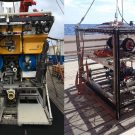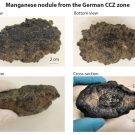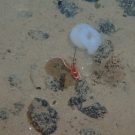– The Ocean Floor Observation System (OFOS) and Remotely Operated Vehicle (ROV) – (deutscher Text siehe unten) Many samples that marine biologists gather during research cruises are taken “physically”, such as deep-sea mud that is heaved up from the seafloor onto the deck via different coring gears, and gets further processed in the labs. With […]
Schätze der Tiefsee / Treasures of the Deep
(English below) Manganknollen – Entstehung und wirtschaftliche Relevanz von Jessica Volz, Sophie Paul und Julia M. Otte Während der ersten globalen Forschungsexpedition der HMS Challenger in den 1870er Jahren wurde das große Ressourcenpotential der Tiefsee deutlich. An Bord der HMS Challenger wurden zahlreiche unbekannte marine Organismen sowie mineralische Konkretionen vom pazifischen und atlantischen Meeresboden, die […]
SO268: What’s up on the seabed?
At the bottom of the Ocean, in ~4000m water depth they can be found in high abundances: Manganese nodules. Industry and states are interested in these potato-sized objects as a new metal resource. But before commercial mining will start, the potential ecological impacts need to be investigated. Therefore, the project MiningImpact (funded through JPI Oceans) […]


